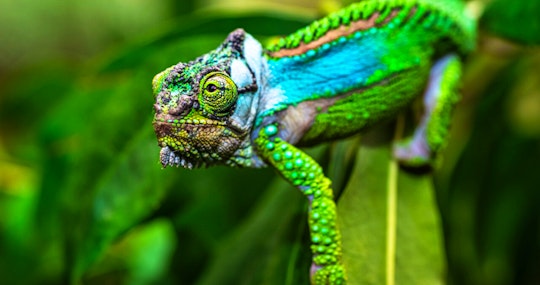The early earth advocate, John Muir, is known to have said, “When one tugs at a single thing in nature, he finds it attached to the rest of the world.” Nowhere is this more apparent than on our most beloved Garden Route. This area, stretching from Witsand in the Western Cape to Storms River in the Eastern Cape, encompasses towns like Knysna, Plettenberg Bay, Mossel Bay, Great and Little Brak River, Wilderness, Sedgefield and Nature’s Valley ─ places vacationers flock to for a beautiful break.
The early earth advocate, John Muir, is known to have said, “When one tugs at a single thing in nature, he finds it attached to the rest of the world.”
Because of its special characteristics, this little strip of land where Afromontane forest meets ocean, is home to some marvellous creatures, many of which can’t be found anywhere else. And, because of the limited size of their habitat, urbanisation and historical exploitation, most of these indigenous creatures face extinction and have learned to be shy to survive. When you visit the Garden Route again, keep an eye out for them and, if you’re lucky enough to spot one, you’ll know its story and its worth.
Brenton-Blue Butterfly
With its spotted grey-brown wings that glimmer a purple iridescence when they move, the Brenton-Blue butterfly is one of the Garden Route’s darlings. It occurs only on a fifteen-hectare strip in Brenton-on-Sea which has been declared a reserve since 2003.
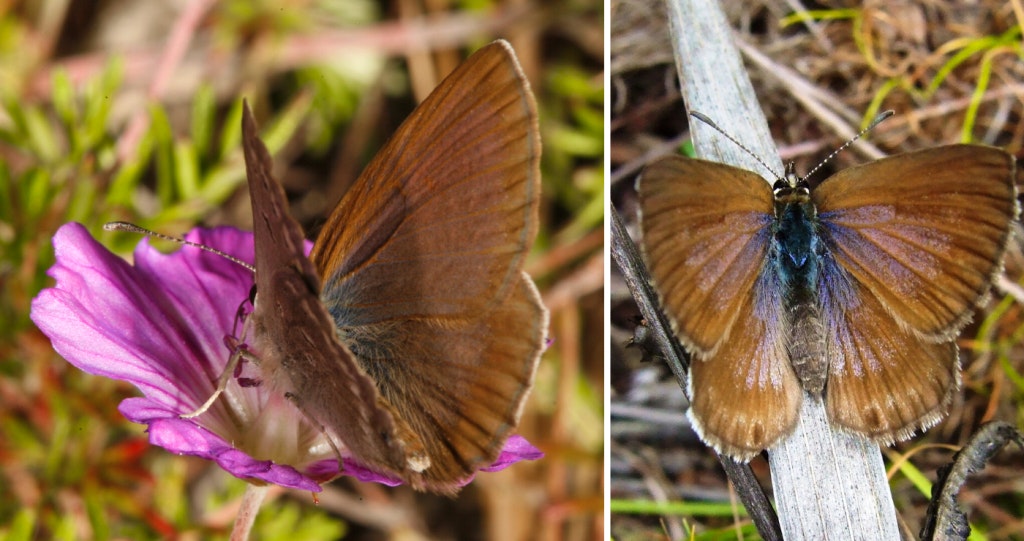
At the moment the butterfly is in a critically endangered state not having been spotted since February 2018, just under a year after the devastating Knysna fires. Apart from its effect on the butterflies themselves, 2017’s fire seems to have driven away the reserve’s Bayne’s Sugar Ants , a species that plays a crucial role in the life cycle of the Brenton-Blue, and though the indigofera erecta plant the butterfly lays its larvae in has seen a return to the reserve, the ants have not, nor has the butterfly ─ yet.
At the moment the butterfly is in a critically endangered state not having been spotted since February 2018, just under a year after the devastating Knysna fires.
But the Brenton Blue Trust and Cape Nature that manages the reserve are hopeful. They have worked tirelessly to reintroduce the sugar ants and are even offering an award for anyone who can find another Brenton-Blue breeding site so that the population of the reserve can be saved by introducing new individuals.
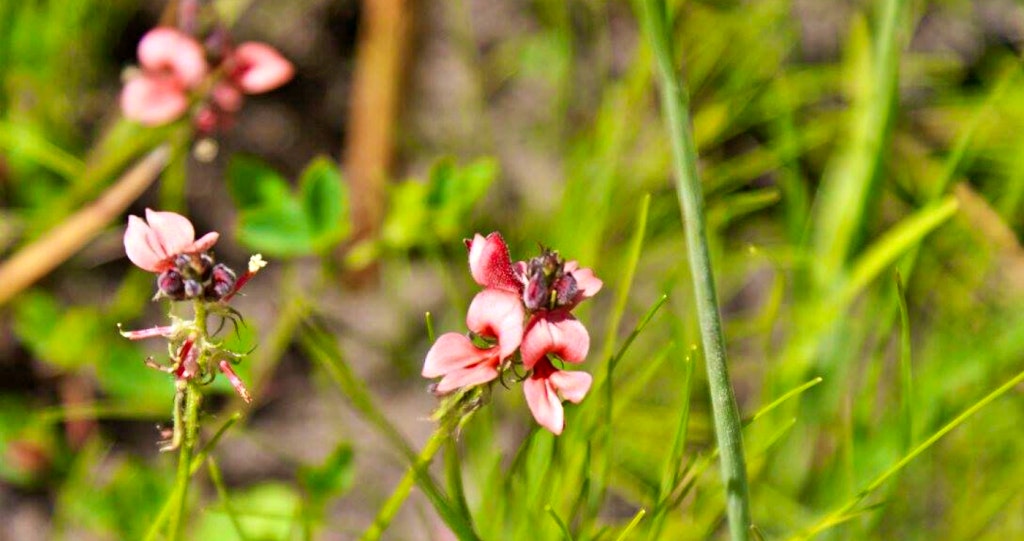
In the meantime ecologist, Dr Dave Edge, has been monitoring the reserve and looking for signs of the butterfly. You can track their progress by following their Facebook page, visit the reserve with all its other beautiful species (although it is temporarily closed to give the vegetation and habitat a chance to recover) or donate to the fund which keeps this reserve and its vulnerable species going.
Knysna Seahorse
Of the forty documented seahorse species on earth, the Knysna seahorse is the only one that is endemic to South Africa. This little fish, growing up to twelve centimetres in length, can only be found in estuaries in the Southern Cape, namely Swartvlei, Keurbooms and in Knysna, apart from a small colony at the Two Oceans Aquarium. It is mainly because of its limited range of possible habitats that the little steeds remain at risk.
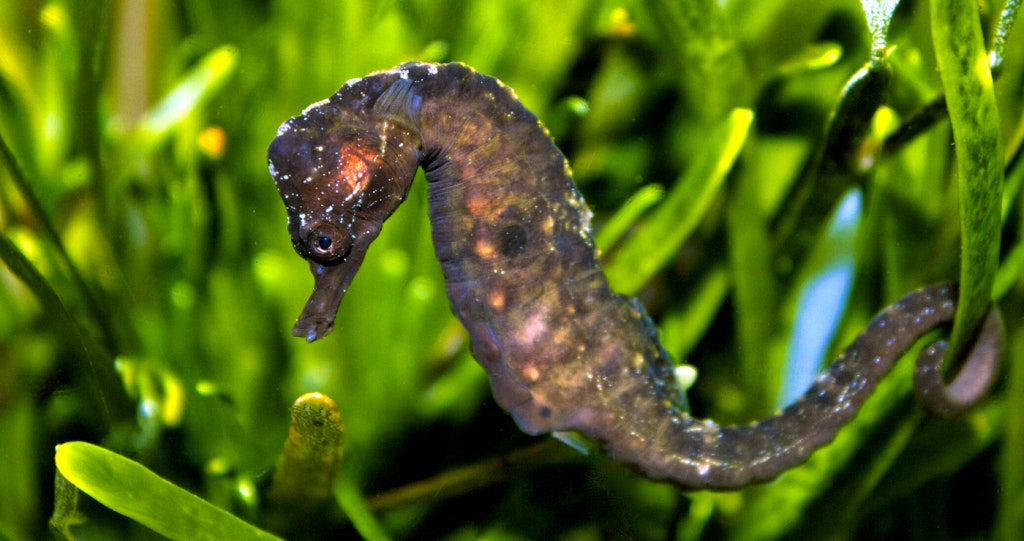
The Knysna seahorse can change its colour from pale green to brown to purplish black depending on its mood and its family dynamic is quite endearing. They are monogamous animals, remaining faithful to a single partner, a bond that is reinforced by daily greetings. During their courtship dance, the seahorses make smacking sounds (like that of smoochy lips) that are loud enough to be heard underwater. The female deposits eggs in the male’s pouch and, when the time comes, he expels dozens of live seahorse babies into the water.
During their courtship dance, the seahorses make smacking sounds (like that of smoochy lips) that are loud enough to be heard underwater.
The Knysna seahorse lives in the plants growing at the bottom of the lagoon as this allows them to hang on with their tails, feed on bottom-dwelling organisms and it acts as a safety measure. But, since houses and shopping centers are being built right on the water’s edge, pollution flowing into the lagoons as well as loads of irresponsible activity on these bodies of water have led to a fifty percent decline in the seahorse population in just ten years! Now the Knysna Basin Project and SANParks are collaborating to create awareness.
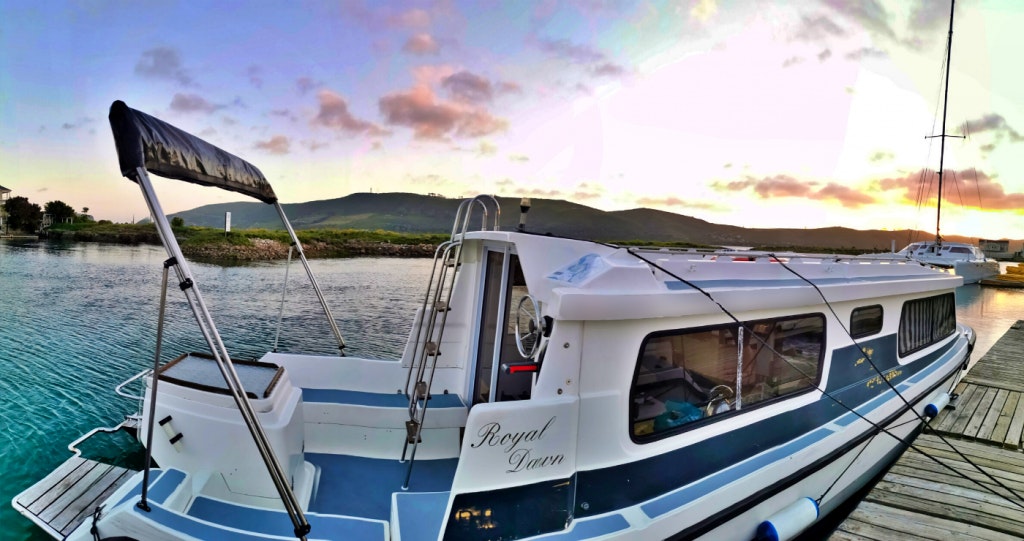
When you visit Thesen Island in Knysna you’ll spot signs on the waterway urging boaters to avoid using their anchors and engines in the planted areas as well as notices near all sidewalk grates reminding visitors that litter will inevitably end up in the lagoon and affect their much-loved seahorses.
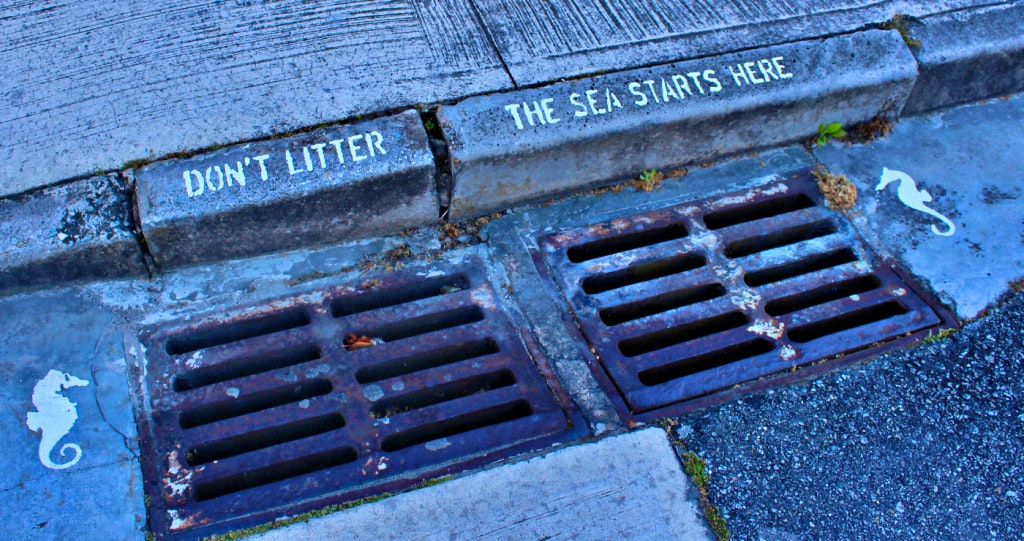
Knysna lourie
One of the less shy animals on the Garden Route is the fabulously flashy Knysna turaco or Knysna lourie as South Africans like to call it. This green and red fruit and insect eater can be spotted all along the evergreen forests of southern and eastern South Africa, but is especially prevalent in and around Knysna, so much so that Knysna’s Mardi Gras and Arts Festival is aptly named The Pink Loerie.
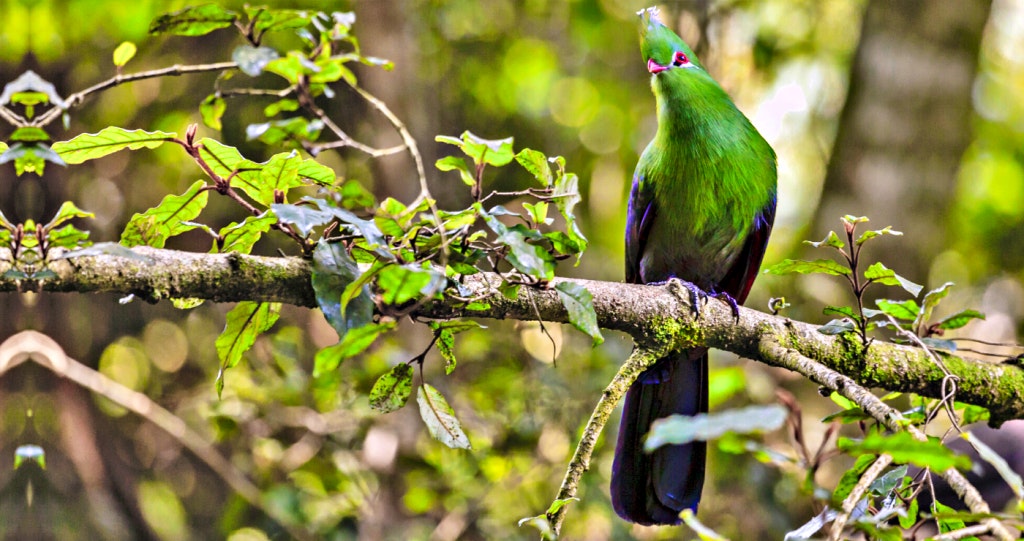
Although its green plumage makes it inconspicuous in the treetops, your eye might be drawn in its direction by its kow-kow-kow-kow call which is used to alert its mates to approaching danger. Once you’re looking in the right direction you might spot its bright orange-red beak or the white rims of its eyes and crest. If that doesn’t work, you’re sure to see it when it flies between branches as the undersides of its wings are an impressive crimson.
Interestingly turacos are the only birds whose red and green colour is true. The colour of most birds is a result of a specific feather structure, but the lourie’s turacin (red pigment) and turacoverdin (green pigment) contain copper and if you were lucky enough to pick one up and stir it in a glass of water, the water would turn pink! In museum exhibits, louries’ feather pigments deepen with time as the copper starts to oxidize.
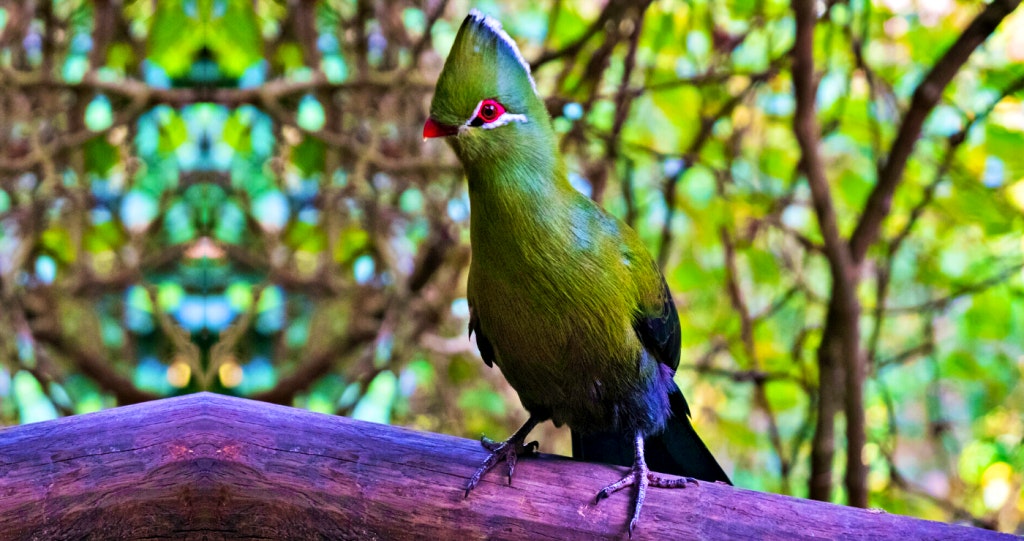
Like Knysna seahorses, louries are monogamous and, what’s more, they are all for gender equality with both the male and female contributing to the building of the nest, brooding on the eggs and feeding the chicks. And, though louries prefer that nesting be a family affair, they are very social birds at other times and tend to move close to their friends, so keep an eye out when you’re making circles in the forest!
Like Knysna seahorses, louries are monogamous and, what’s more, they are all for gender equality …
Knysna Elephant
The notion of there still being elephants roaming amongst the trees of the Garden Route remains a captivating one. It is an idea that we have come to appreciate not only because of Dalene Matthee and her majestic elephant character Oupoot in Circles in a Forest, but also because, had there been such a herd left, it would constitute the only unfenced elephants in South Africa!
Had there been a herd left in the forest, it would constitute the only unfenced elephants in South Africa!
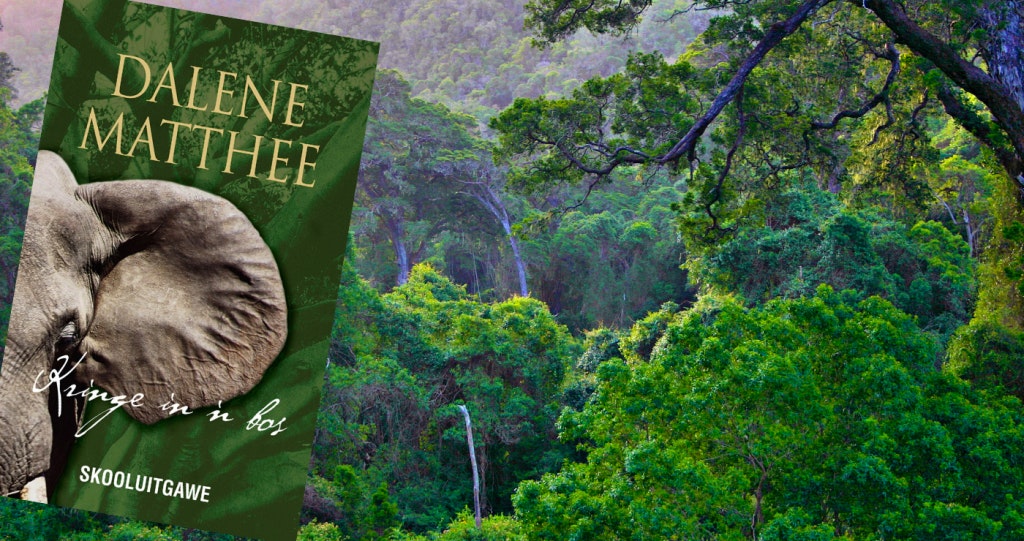
Historically these highly intelligent and empathetic animals have been hunted to near extinction under the guise of their supposed destructive nature, when their destruction has seldom been more than stress caused by infringement on their habitats. Of course, the value of their ivory tusks was more than enough reason for hunters to assist in the “thinning out” of Knysna’s elephant herds in the early to mid twentieth century.
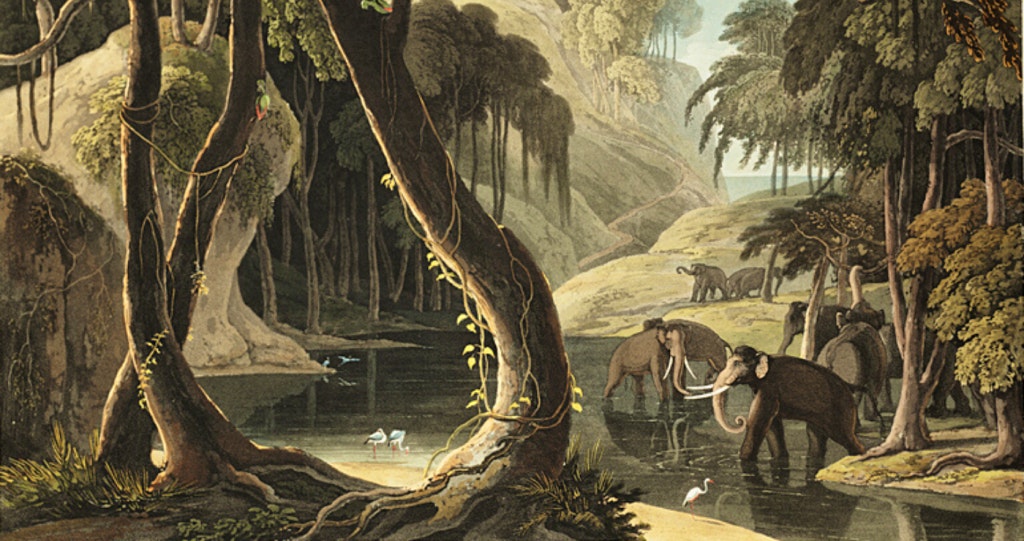
On 9 February 2019, after months of video research, SANParks reported that there is a last lone female elephant in the forest. The scientist who conducted the search, Lizelle Moolman, says that though many still hold out hope that there might be more elephants hidden among the trees, the solo elephant’s idiosyncratic behaviour and the fact that she has never been spotted with a herd would have Moolman believe that this is the last free elephant in Knysna. Elephants are herd animals, and had there been any others, this 45-year-old female would have found them.
Today visitors on the Garden Route have the opportunity to see elephants at the Knysna Elephant Park on the way to Plettenberg Bay. Established in 1994, it is the first facility in the country to care for orphaned elephants and the herd currently stands at ten happy, healthy bigfeet. So, in the spirit of honouring the functionally extinct Knysna elephant, supporting the maintenance of this herd would be a kind gesture.
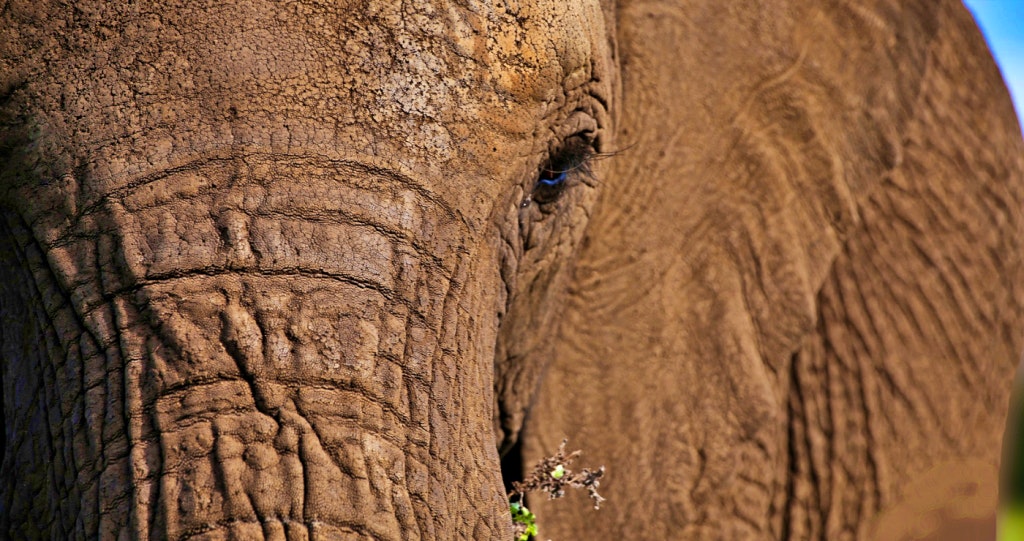
Knysna Dwarf Chameleon
The Knysna Dwarf Chameleon’s claim to fame is that it has the longest tail of all the Bradypodion (“slow-footed”) chameleons and is one of the few of its species to give live birth (to up to thirty babies at a time!). The Afromontane forest near Knysna is this slow-goer’s one and only home.
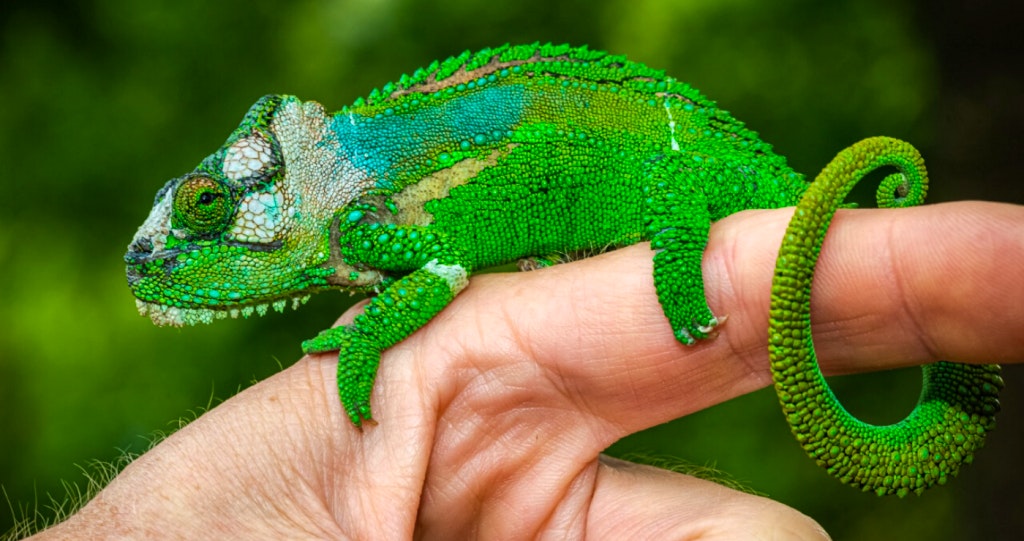
The striking chameleon can reach a total length of 25 centimetres (nose to tail tip); the females only 18 centimetres. However big they grow, these forest dwellers are exquisite, with bright green to bluish skin decorated with splashes of pink, orange, navy and black. These colours change, not to camouflage the chameleon as many would believe, but based on what they are feeling and what they’d like to communicate to each other. When they are happy and unthreatened they might turn bright turquoise, orange or white and when they are in trauma, they turn mostly black.
These colours change, not to camouflage the chameleon as many would believe, but based on what they are feeling and what they’d like to communicate to each other.
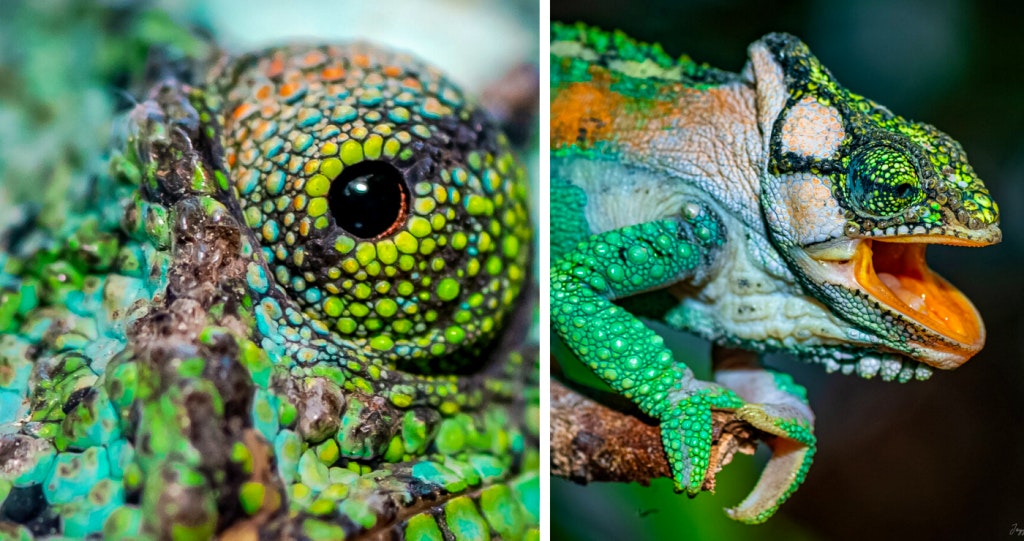
Aldo Kleyn, a Knysna resident has made it his passion to care for these animals since witnessing one unsuccessfully try to cross a road in town a few years ago. After some research he realised how vulnerable they were with the town encroaching on the forests and wanted to help. He subsequently set up a successful rehabilitation, conservation and re-homing project to assist with the Knysna Dwarf Chameleon’s survival and, even after losing his home and chameleon sanctuary in the June 2017 fires, has rebuilt much of what he has lost.
Since these creatures move so slowly, they were particularly affected by the fires and hundreds of devastatingly injured chameleons were found in subsequent weeks. But, just as slowly and surely as these chameleons walk, Kleyn has been able to create awareness of their plight and educate followers on caring for these creatures through his work and his Facebook page which you can follow to show your support.
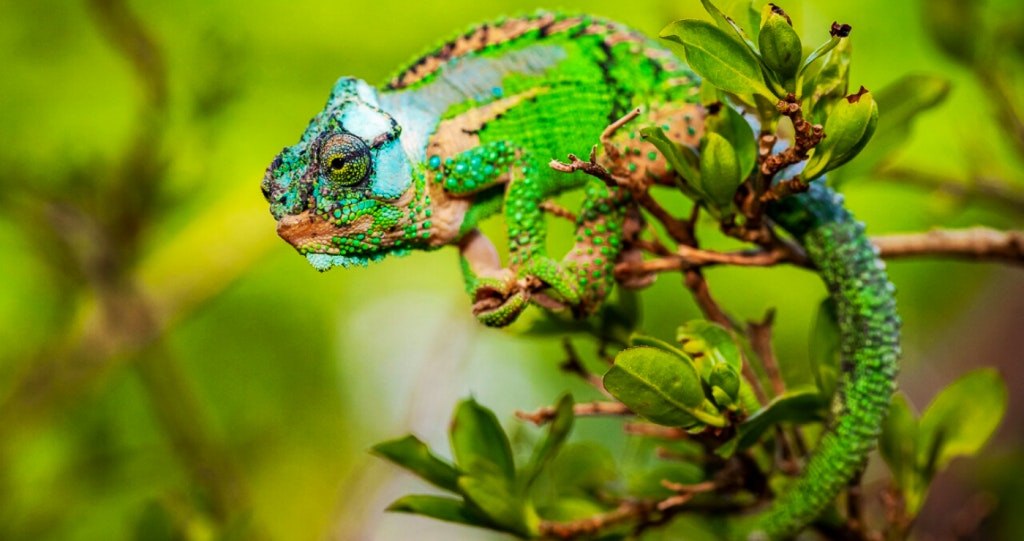
______________
Shy and small or beautiful and bright, the Garden Route’s unique animals are worth taking note of. They are the mascots of a healthy, happy forest and when you visit this paradise on the southern coast again, make sure to keep an eye out for them!
Main image: Joggie van Staden for African Mosaic

